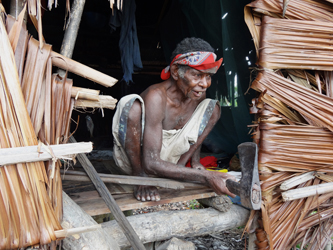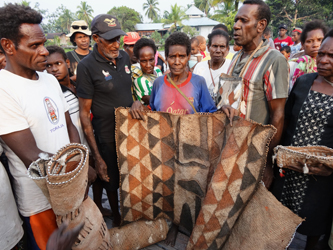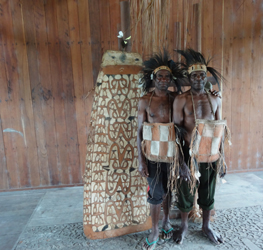Fieldwork in Indonesian Papua


 My fieldwork concerns how a single practice of aesthetic production—woodcarving among Asmat people in Indonesian Papua—mediates a community’s conditions of existence at many levels. Asmat woodcarving is famous worldwide, and remains a central element in Asmat life. Having once been suppressed by Dutch and then Indonesian colonial regimes, which banned the cycles of warfare and ritualised violence that carving was traditionally a part of, it has undergone a renaissance since the 1970s, with the support of the local Catholic mission. I am interested in how Asmat people use carving, both as a type of object and as a practice, to mediate their relations: with ancestors, with one another and with non-Asmat others, including state officials, the Catholic Church, Indonesian migrants, the Freeport mining company, and international art collectors and tourists.
My fieldwork concerns how a single practice of aesthetic production—woodcarving among Asmat people in Indonesian Papua—mediates a community’s conditions of existence at many levels. Asmat woodcarving is famous worldwide, and remains a central element in Asmat life. Having once been suppressed by Dutch and then Indonesian colonial regimes, which banned the cycles of warfare and ritualised violence that carving was traditionally a part of, it has undergone a renaissance since the 1970s, with the support of the local Catholic mission. I am interested in how Asmat people use carving, both as a type of object and as a practice, to mediate their relations: with ancestors, with one another and with non-Asmat others, including state officials, the Catholic Church, Indonesian migrants, the Freeport mining company, and international art collectors and tourists.
These photos were taken during five months of fieldwork in 2015 when I volunteered with the Asmat Museum of Culture and Progress, run by the local Catholic diocese to support the continuation of local ‘art’ and ritual practices. I present these images with profound thanks to the people of the twin villages of Sawa-Erma for the time we shared together.
From top right:
Pupis shows his axe collection.
Salon des Refusés: the sale of weavings which were not selected for the Asmat Cultural Festival art auction.
Tourists: Mbes and Serambi, from the village of Er, ask to have their photo taken dressed up ‘people from Jakapis’ while visiting that village, having found items of self-decoration stored in the local Church.
